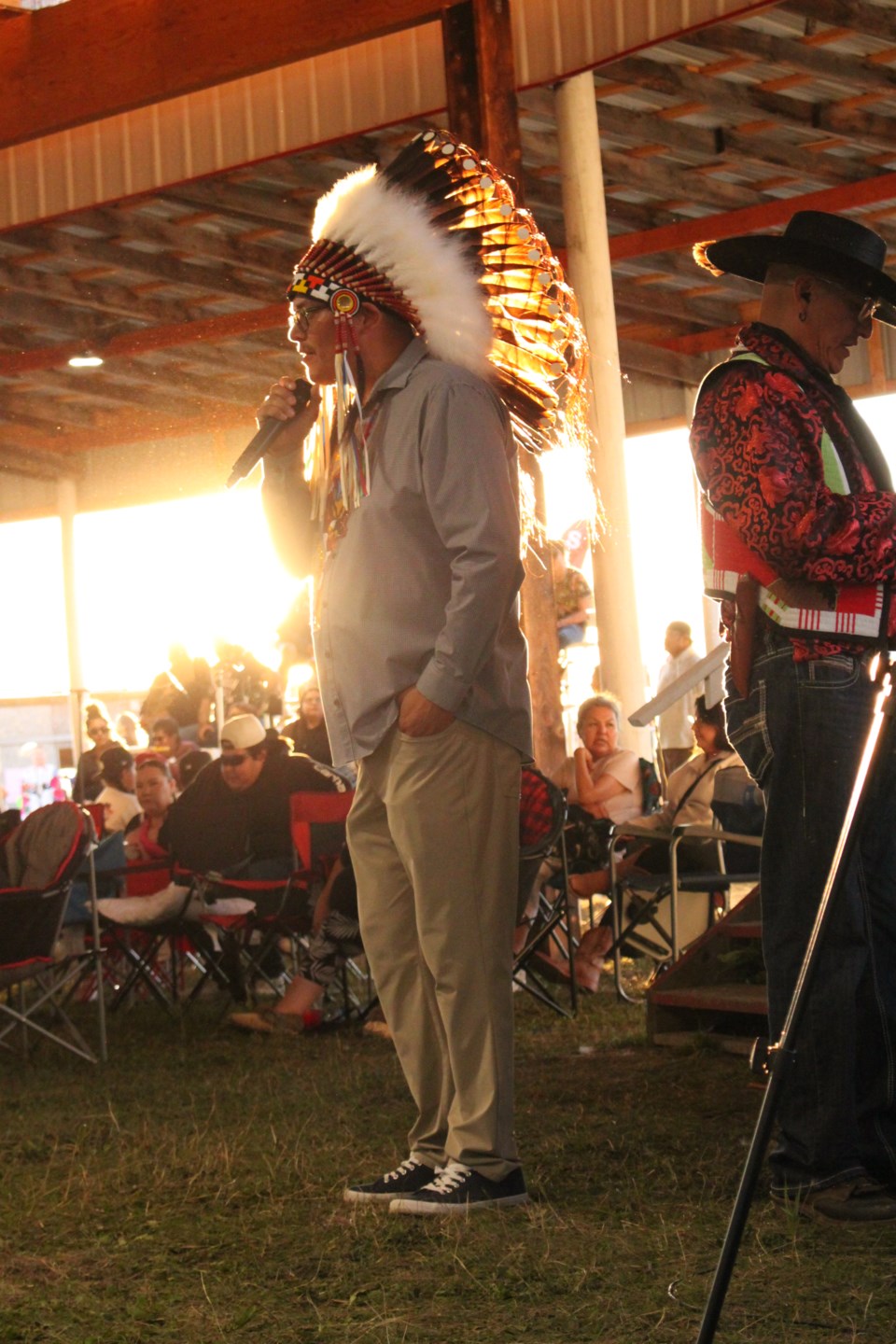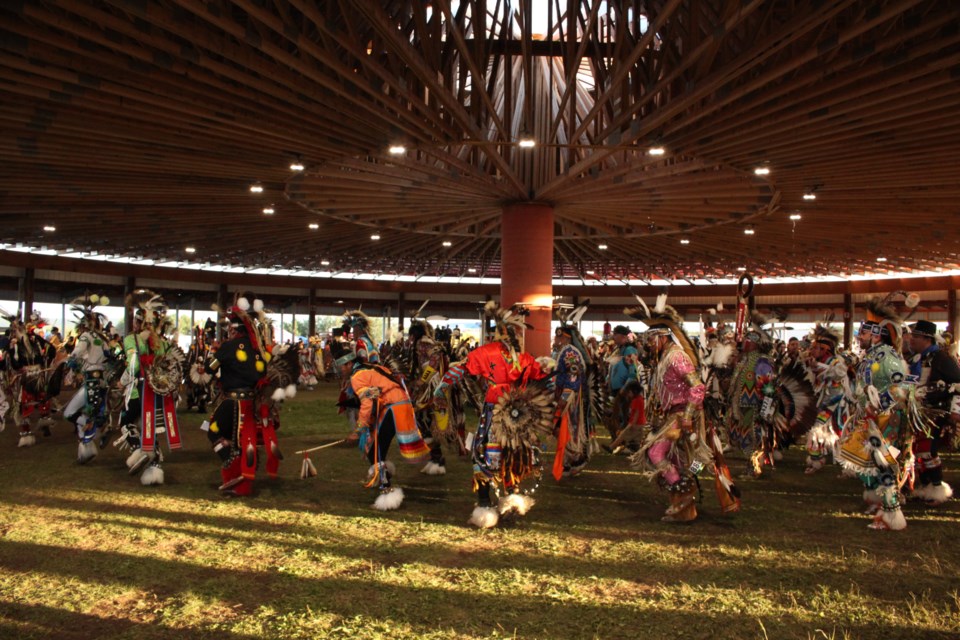KEHEWIN - The Kehewin Cree Nation annual powwow, with its vibrant dancers by the hundreds and sprawling crowds, was a heartening sight for Chief Trevor John.
The event happened Aug. 23-25, and saw dancers and attendees from across Turtle Island gather in celebration.
"When I look at this, it fills my heart, and I just think about how these traditions have survived and are starting to grow again," says John.
“That's such a proud feeling – knowing that the next 10 years is going to be even stronger, more powerful, with more dancers, more people speaking the language. Even the singers when they sing, that’s our language being passed down – those are our words being sung through ceremony and people feel it in here and they keep it there,” says John, as he places his hand on his chest.
The arena was alive with drums and vibrant dancers circling the arena in a hypnotic rhythm, as spectators nodded and bounced to the beat.
“We host an annual powwow,” explains John. “We've been powwowing in Kehewin since time immemorial."
John expressed his gratitude for the people that come out to help the community celebrate – the spectators, the dancers, and visitors, as well as the sponsors that help make the event happen. “It’s a very powerful feeling in there,” says John.
He further explains, “Before the treaties, we would have to hide and do this on our own, we weren't allowed. We signed that peace treaty that we were going to shake hands with one another, we were going to treat everyone with respect, and when we host powwows like this, it’s for everyone – it's for our people, visitors, eastern, western, it doesn't matter."
The chief wanted people to enjoy the good food, the soulful dancing, the powerful music, and the good company of his people, who he describes as a kindhearted people with many friends.
After the pandemic, John says he noticed the impact that isolation had on people's mental health.
“People want to build their wall around them. It's not healthy for your mind, it’s not healthy for your soul, it's certainly not healthy for your body,” says John.
The powwow offers a place of physical invigoration as well as the social connection that communities thrive on.
Honouring the past
John explains how the round pavilion the powwow was held under has been standing there for 30 years, and before the powwow they updated the structure to preserve it and the memories it holds.
“We placed our old centre pole as a flagpole there, in honour of the years past. Our mothers, when their children were born, they’d take the stems from their bellies and bury them at the centre pole there, so we were able to get the dirt all the way around it and place it here in honour of our mothers and past, generations.”
The powwow site remains steeped in tradition.
John is passionate about honouring the knowledge that has been passed down from their elders, but explains that there is still work to be done in healing the negative impacts of colonization.
“Our Elders are leaving us early. They’re stuck in that way - they were the ones that went through hell. They were the ones that bottled it up and couldn't figure out a way to deal with that. And when they leave us early, that knowledge also leaves. So, we have to make sure that we capture as much of that knowledge as we possibly can,” says John.
He further elaborates, “Our generation missed out, we were the ones that had to go through the inter-generational trauma. We had to relearn it, go out there and take it back, because some of our parents were lost. They didn't even want to speak the language for fear of prosecution."
As John talks about the struggle Indigenous people have faced in their efforts to preserve their culture, the booming sounds of the powwow still active in the distance speaks to the success of rekindling traditions that were almost lost.
“There was a time when we didn’t speak the language, we didn't know our ceremonies. It took our elders to go out and re-learn what they had lost and bring that back.”
John gestures to the pavilion, loud and expressive in full celebration - “Forty or 50 years later you see what we have now, you see the people carrying pipe, you see the people talking the language, wearing our true colours – our little ones learning from the older ones.”
The future of powwow and Indigenous culture looks bright as the event was brimming with happy children, soaking in their culture.
“We need the children to hear that music, hear that heartbeat,” says John, as he drums his hand on his chest. “That’s what that represents, the heartbeat. When you understand that, it stays in you. That's what we need for our babies."




